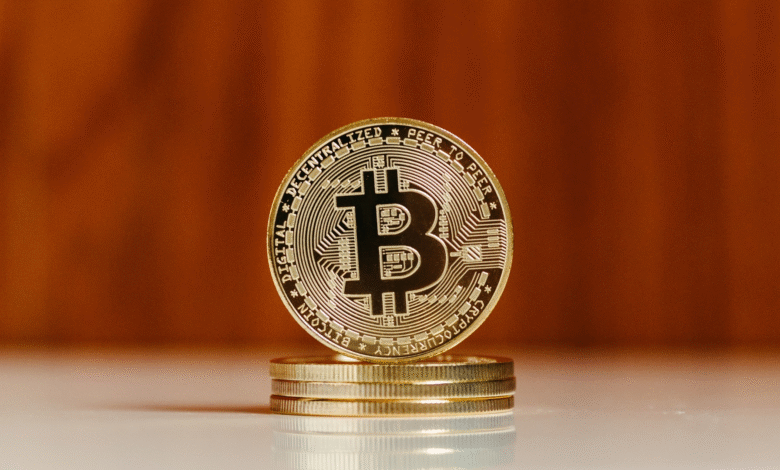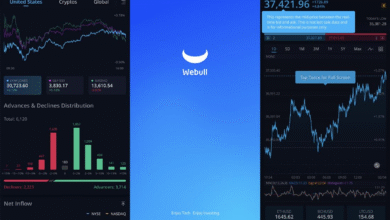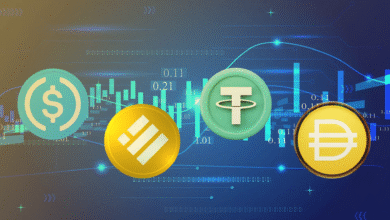Bitcoin Mining Financing Strategies: MARA vs. Riot in Q2

Bitcoin mining financing has become a focal point in the evolving landscape of cryptocurrency investment, particularly as companies like MARA and Riot adopt distinct strategies to fund their operations. In the second quarter, MARA made headlines by significantly increasing its equity issuance, raising an impressive $204 million to bolster its Bitcoin treasury strategy, ensuring they retain all mined Bitcoin. Conversely, Riot turned to debt financing and Bitcoin sales, having sold a staggering 96.5% of its mined Bitcoins that quarter to cover operational expenses. These divergent approaches highlight the ongoing debate in the industry over equity versus debt financing, as companies navigate their growth amidst volatile market conditions. Understanding these financing methods is crucial for investors looking to strategically position themselves in the dynamic world of cryptocurrency mining.
The financial mechanisms behind Bitcoin mining operations represent a crucial element of the broader cryptocurrency ecosystem, as firms explore various funding options to enhance their market position. Companies involved in cryptocurrency extraction are increasingly weighing the pros and cons of equity-based methods against borrowing strategies, with some, like MARA, focusing on a treasury model that prioritizes asset retention. Meanwhile, others, such as Riot, are leveraging credit facilities and the sale of mined coins to ensure liquidity and sustain growth. This dichotomy in financial strategies not only reflects individual corporate philosophies but also speaks volumes about the overall confidence levels in the cryptocurrency market. As the industry matures, understanding these funding dynamics will be essential for stakeholders looking to maximize their investments and navigate the intricacies of Bitcoin mining financing.
Contrasting Bitcoin Mining Financing Strategies
In the highly competitive world of cryptocurrency, the financing strategies adopted by Bitcoin mining companies can significantly impact their operational capabilities and long-term sustainability. Companies like Marathon Digital Holdings (MARA) and Riot Blockchain exemplify contrasting approaches to capital raising that reflect their underlying treasury philosophies. MARA has opted for equity financing, raising an impressive $204 million through stock sales in Q2, which highlights their commitment to maintaining a robust Bitcoin treasury strategy. By holding onto their mined Bitcoin, MARA is banking on the cryptocurrency’s potential appreciation, aligning with a broader HODL philosophy.
On the other hand, Riot Blockchain has shifted its focus towards debt financing, indicating a more aggressive approach to managing immediate operational costs. In Q2, Riot sold over 96% of its mined Bitcoin and raised $51 million through stock sales, illustrating a reliance on liquidating assets to maintain cash flow. This strategy is indicative of a company that is navigating the volatility of the cryptocurrency market by leveraging both debt and equity financing methods. Such divergent methods underscore the broader conversation around effective capital management in the Bitcoin mining sector.
The approaches taken by MARA and Riot not only demonstrate their individual strategies but also raise questions about risk management in the cryptocurrency industry. By favoring equity, MARA is reducing its leverage risk, potentially increasing shareholder value in the long term as Bitcoin prices rise. Conversely, Riot’s inclination towards debt financing could yield higher returns more quickly, albeit with increased risk if Bitcoin prices decline. This dichotomy invites deeper exploration into the implications of cryptocurrency investment and the paramount importance of a company’s treasury management strategy.
Ultimately, the contrasting financing choices of these two giants reflect differing philosophies on how best to traverse the complex landscape of Bitcoin mining. As the market evolves, these strategies could reshape the competitive dynamics within the cryptocurrency ecosystem, making it imperative for investors and stakeholders to stay informed about the implications of equity versus debt financing in Bitcoin mining.
The Role of Bitcoin Treasury Strategy in Mining Operations
A sound Bitcoin treasury strategy is critical for mining companies as it directly influences their financial health and operational flexibility. MARA stands out for its steadfast commitment to a 100% HODL philosophy, retaining all mined Bitcoin in anticipation of long-term appreciation. This strategy not only provides a buffer against market volatility but also positions MARA to capitalize on Bitcoin’s potentially rising value. By analyzing the historical performance of Bitcoin, it becomes evident that companies like MARA, which adopt a treasury strategy focused on holding assets, could disproportionately benefit in bull markets.
In contrast, Riot Blockchain’s more liquid approach—selling 96.5% of its mined production—demonstrates a strategy focused on immediate liquidity to cover operational costs. While this can ensure short-term stability, it raises questions about long-term financial wisdom, especially in an industry characterized by price volatility. The need for immediate cash can overshadow the benefits of building a strong Bitcoin treasury, which could yield returns over time through asset appreciation. The balance between retaining mined assets and satisfying immediate financial needs is a delicate one, and each company’s strategy reflects its outlook on the future of Bitcoin.
Moreover, this divergence in treasury strategies is also indicative of how companies align themselves with broader market sentiments and forecasts. MARA’s approach may resonate with investors who believe strongly in the potential for Bitcoin to reach unprecedented heights, thus validating a long-term holding strategy. Conversely, Riot’s strategy might appeal to those who prioritize consistent cash flow over potential appreciation, framing the debate around the merit of liquidating Bitcoin for operational funding versus holding for heightening long-term value.
The stark differences in these strategies illuminate the complexity of decision-making within the cryptocurrency sector, where companies must navigate not only operational costs but also the unpredictable nature of Bitcoin’s market performance. These differing treasury philosophies will likely influence investor sentiments and ultimately shape the competitive landscape in Bitcoin mining.
Exploring Equity vs Debt Financing in Bitcoin Mining
When examining Bitcoin mining financing, the debate between equity and debt emerges as a central theme in shaping a company’s capital structure. MARA provides a prime example of equity financing at work, having successfully raised $204 million in Q2 through stock sales. This decision allows MARA to avoid the pitfalls associated with high debt levels, providing a buffer against market downturns while maintaining operational flexibility. Equity financing not only reduces immediate financial burdens but also aligns the interests of investors with the long-term growth trajectory of the company.
Contrastingly, Riot’s strategy reflects a growing reliance on debt to fuel operational costs and growth initiatives. With a total of $251 million in credit-based borrowings, Riot demonstrates how debt financing can offer quick access to necessary cash flows, albeit with the inherent risk of repayment. This approach allows for operational flexibility in the short term but could impose significant long-term financial obligations as the company navigates its debt repayments amid volatile cryptocurrency markets. Analyzing the merits and drawbacks of each financing method uncovers insights into how companies might best structure their financial strategies to thrive.
The choice between equity and debt financing can heavily influence investor perceptions and market positioning. Equity financing generally signals greater stability and risk mitigation, appealing to more risk-averse investors. On the other hand, companies like Riot, with their aggressive debt strategies, may attract investors looking for potentially higher short-term returns, despite the associated risks. This divergence showcases the importance of adapting financing strategies to individual company circumstances, market conditions, and long-term goals.
Overall, the contrast between MARA and Riot’s financing strategies not only sheds light on their operational philosophies but also emphasizes the broader implications for the Bitcoin mining sector. As cryptocurrency investment continues to evolve, understanding the principles of equity versus debt financing will be invaluable for stakeholders looking to navigate this complex and transactionally-driven market.
Frequently Asked Questions
What are the differences between MARA and Riot in their Bitcoin mining financing strategies?
In Q2, MARA (Marathon Digital Holdings) adopted an equity financing strategy, raising $204 million by selling stock, and maintained its policy of retaining all mined Bitcoin in its treasury. In contrast, Riot Blockchain relied more on debt financing and Bitcoin sales, reducing its equity fundraising to $51 million and selling 96.5% of its mined Bitcoin to cover operational costs. These differing approaches highlight distinct treasury strategies in Bitcoin mining financing.
How does equity financing impact Bitcoin mining companies like MARA?
Equity financing, as seen with MARA, allows Bitcoin mining companies to raise capital by issuing stock. In Q2, MARA successfully generated $204 million from equity issuance, enabling them to finance operations and maintain a ‘HODL’ strategy, where all mined Bitcoin is kept in their treasury. This can strengthen their long-term position in the cryptocurrency market, despite potential dilution of shares.
What role does debt financing play in Riot’s Bitcoin mining operations?
Riot’s strategy involves significant debt financing to support its Bitcoin mining operations. In Q2, they increased their borrowings to $251 million, utilizing credit facilities to cover expenses and fund growth. This approach, combined with Bitcoin sales, allowed Riot to manage cash flow effectively while navigating the volatile cryptocurrency investment landscape.
What is the ‘HODL’ strategy in the context of Bitcoin mining financing?
The ‘HODL’ strategy, adopted by MARA, refers to retaining all mined Bitcoin rather than selling it for immediate cash. This approach emphasizes long-term investment in Bitcoin, aiming to capitalize on potential price appreciation. By financing operations through equity rather than selling mined Bitcoin, companies like MARA can preserve their cryptocurrency assets.
How do Bitcoin treasury strategies affect financing decisions for mining companies?
Bitcoin treasury strategies significantly influence financing decisions. Companies like MARA, which emphasize HODLing, tend to raise capital through equity financing to sustain operations without liquidating their Bitcoin assets. Conversely, others like Riot may opt for a mix of debt financing and Bitcoin sales to meet immediate financial needs. These strategies can impact a company’s market positioning and resilience in the highly volatile cryptocurrency investment arena.
What are zero-coupon convertible notes, and how did MARA use them for financing?
Zero-coupon convertible notes are debt instruments that do not pay interest but can be converted into a company’s stock at a future date. In a significant financing move, MARA issued $1 billion in these notes due in 2032, allowing them to raise funds without immediate cash outflow, thus aligning with their strategy of retaining mined Bitcoin in their treasury.
What challenges do Bitcoin mining companies face when choosing between equity and debt financing?
The primary challenges in choosing between equity and debt financing for Bitcoin mining companies involve balancing capital needs with long-term implications. Equity financing can lead to share dilution, while debt financing increases financial obligations and interest payments. Companies must assess market conditions, their Bitcoin treasury strategies, and operational costs to determine the most suitable financing method.
How can the financing strategies of MARA and Riot affect investor confidence in Bitcoin mining?
Investor confidence can be influenced by the contrasting financing strategies of companies like MARA and Riot. MARA’s commitment to equity financing and HODLing mined Bitcoin may attract investors seeking stability and long-term growth. Meanwhile, Riot’s reliance on debt financing and Bitcoin sales may appeal to those looking for aggressive growth strategies but could raise concerns about cash flow and debt levels.
What implications do capital raising strategies have on the future of Bitcoin mining firms?
Capital raising strategies play a crucial role in shaping the future of Bitcoin mining firms. Firms like MARA, which favor equity financing and a conservative Bitcoin treasury strategy, may build resilience during market downturns. On the other hand, firms like Riot that utilize debt financing and sales may spur rapid expansion, but their long-term sustainability could be challenged by market volatility and debt service requirements.
| Company | Q2 Equity Raised | Bitcoin Sold | Debt Financing | Treasury Strategy |
|---|---|---|---|---|
| MARA | $204 million | None (all retained) | $0 million | 100% HODL Policy |
| Riot | $51 million | 1,377 BTC (96.5%) | $251 million | Combination of Sales and Debt |
Summary
Bitcoin mining financing is a critical aspect of the cryptocurrency market, particularly in light of the differing approaches taken by companies like Marathon Digital Holdings (MARA) and Riot Blockchain. While MARA emphasizes capitalizing through equity issuance without liquidating assets, Riot has adopted a more aggressive strategy involving substantial sales of mined Bitcoin and debt financing to support its operations. This divergence highlights the varied philosophies in Bitcoin mining financing and the implications for future capital raising in the sector.




